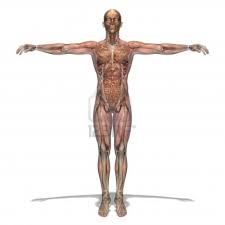
Introduction
Congenital Heart Diseases exist at birth, and can describe a wide variety and different abnormalities affecting the heart. “Congenital” refers to aspect of time, not to causation. It means “present at birth” or “born with”. Heart defects originate in the early part of pregnancy when the heart is forming and affect any of the parts or functions of the heart. Therefore Congenital Heart Disease is a type heart disease occurring in newborns, and includes structural defects which lead to irregular heart beats or arrhythmia and malfunctioning of heart muscles.
Sign and Symptoms
Some of the main types of congenital heart disease and their accompanying symptoms include:
Septal defect. Also referred to as a “Hole in heart”. The defect is a hole in the wall that divides the right and left sides of the heart. A hole between the lower chambers is called a ventricular septal defect while a hole in the wall between the heart’s two upper chambers is called an atrial septal defect. These defects require the hear to work harder as the blood is not circulating properly. Surgery to close the hole by sewing or patching it is often required. Promisingly small holes may heal by themselves or not need surgical repair at all.
Heart valve abnormalities. Some babies are born with heart valves that do not close normally or are narrowed or blocked, so blood can’t flow smoothly. Surgeons usually can repair the valves or replace them with man-made ones. Balloons on catheters also are frequently used to fix faulty valves.
Coarctation of the aorta. The aorta is the large artery which sends blood from the heart to the rest of the body. In this condition part of the aorta, may be too narrow for the blood to flow evenly.
Transposition of the great arteries. Transposition occurs when the positions of the two major arteries leaving the heart are reversed, so that each arises from the wrong pumping chamber. In this condition newborns suffer from severe cyanosis due to a lack of oxygen in the blood.
Tetralogy of Fallot. This combination of four heart defects keeps some blood from getting to the lungs. As a result, the blood that is pumped to the body may not have enough oxygen. In this condition affected babies have episodes of cyanosis and may grow poorly. This defect is usually surgically repaired at around 3 to 6 months of age.
Hypoplastic left heart syndrome. This combination of defects results in a left ventricle (the heart’s main pumping chamber) that is too small to support life. This condition is the most common cause of death from congenital heart disease.
As congenital heart disease complications are usually surgically corrected at an early age, many develop into adults and lead unaffected lives. However, some conditions are too risky for surgery and so some people may experience a number of common cardiac signs and symptoms including:
- dyspnea or shortness of breath
- irregular palpitations which are fluttering or skipping and
- chest pain.
A newborn presenting with any of the above cardiac signs require immediate medical assessment often performed by a pediatric cardiologist.
People with congenital heart disease also have an increased risk of cardiac infection and stroke and may require additional surgery later in life.
Causes
Understanding the fetal heart circulation helps to understand how some forms of the congenital heart disease occurs. There is only one small flow of blood is through the fetus and this is occurs in the lungs, as it obviously can not breathe inside the uterus. The circulation allows oxygenated blood from the placenta to pass directly to the left side of the heart without going through the lungs, as in adult heart circulation.
Congenital Heart Disease occurs when the heart or blood vessels next to the heart are not generated properly before the birth. Therefore, the heart does not function properly because it is not completely developed. Heart-related vessels stenosis or obstruction, defection in atrial or ventricular septum, and other deficiencies cause much strain on heart muscles, which results working hard and beating faster of the heart.
In most cases, it is unknown what makes a baby’s heart develop abnormally. However both environmental and genetic factors appear to play roles. While most congenital heart defects are unable to be prevented. There are some steps a woman can take that may assist in reducing her risk of having a baby with a heart defect. Before conceiving a woman should be tested for immunity to rubella and subsequently vaccinated if she is not immune. Pregnant women should avoid alcohol and unprescribed drugs. Those with chronic health conditions, such as seizure disorders and diabetes should consult their medical provider before they attempt to conceive so that their medications and/or diets can be adjusted. Any woman who is planning on becoming pregnant is highly recommended to take a multivitamin containing 400 micrograms of folic acid daily to reduce the risk of serious birth defects of the brain and spinal cord and possibly even congenital heart defects.
Diagnosis
Occasionally congenital heart disease can be identified before birth. To obtain diagnosis in-utero an echocardiography can be performed to accurately identify many heart defects.
Most cases of Congenital Heart Disease are not diagnosed until birth or beyond. The majority of cases of congenital heart disease are diagnosed within the first week of age or within the newborn period which refers to the first month of life after birth. Early diagnosis is important because many types of congenital heart disease are amenable to surgical treatment.
Tests often include a chest X-ray, an electrocardiogram, which records heart rate patterns and an echocardiogram, which is a special form of ultrasound that uses sound waves to take pictures of the heart. All of these tests are painless and non-invasive as no equipment enters the child’s body.
Complications
Some babies and children with heart defects experience no symptoms. The heart defect may be diagnosed if the health care provider hears an abnormal sound, referred to as a murmur. Children with normal hearts also can have heart murmurs. These are called innocent or functional murmurs. A medical provider may suggest other tests to rule out a heart defect.
Certain heart defects prevent the heart from pumping adequate blood to the lungs or other parts of the body. This can cause congestive heart failure and lead to inability in the heart to pump out all the blood that returns to it, leading to fluid build-up in the heart, lungs and other parts of the body. Sometime the newborn may experience a rapid heartbeat and breathing difficulties, especially during exercise. Infants may experience these difficulties during feeding, sometimes resulting in inadequate weight gain. Babies with congenital heart disease also may develop swelling of the legs or abdomen or around the eyes.
Some congenital heart defects may result in the newborn’s skin appearing grayish or bluish in colour, this is called cyanosis. If this complication is going to develop it usually does so soon after birth or during infancy and is a sign that there is not enough oxygen reaching the blood. Consequently children with cyanosis may tire easily. Symptoms, such as shortness of breath and fainting, often worsen when the child exerts himself. Some youngsters may squat frequently to ease their shortness of breath.
Treatment
The treatment of Congenital Heart Disease depends ultimately upon the specific type and the degree of severity of that type of Congenital Heart Disease. It is also important when reviewing treatment options to consider such as factors as the newborns age and general health.
Additionally genetic counselling is strongly recommended for all families with Congenital Heart Disease, regardless of whether they do or not plan to have more children. The information and support is also valuable to extended family members and their future offspring.






Leave A Comment